Crazy Transportation in Shanghai

In a city as populated as Shanghai, a good transportation system is essential in keeping the city functional. In fact, they need to be damn good at it to get the 12 million people moving about without being stuck on the street for three hours at a time.
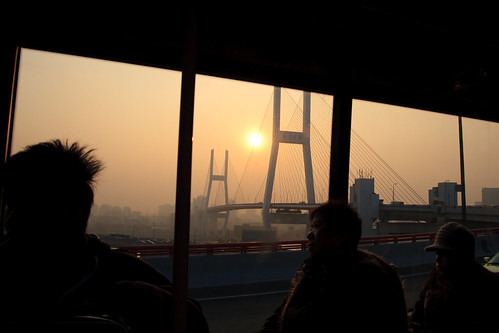
Shanghai has one of the best public transportation systems in the world. Its subway network currently operates eleven metro lines and it has a daily ridership of more than 4 million. Its bus network is even more staggering - there are more than 1000 bus routes in operation in the city, and they connect various points of the city very efficiently. In general, for a long distance travel, people first take metro to get to the vicinity and change to a bus to reach the destination. The bus fare is 2 yuan per trip while the metro fare is between 3 9 yuan, so it's very affordable.
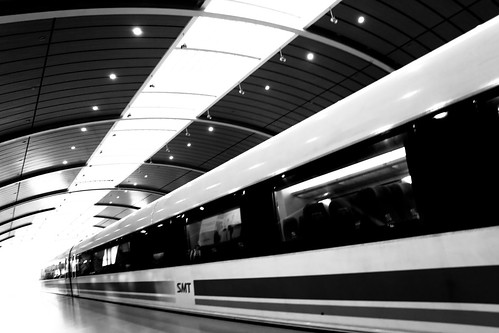
Our very first encounter of Shanghai's public transport began with the awe-inspiring Maglev train (Magnetic Levitation train). Operating at a top speed of 431km/h, the 30km journey from the airport to the city area is done in a mere 7 minutes and 20 seconds. The journey was extremely smooth, and the idea that you were travelling at one third the speed of sound right on the ground is simply exhilarating. This project is making a loss, unfortunately, with its current ridership and the ticket price of 50 yuan per journey, it's simply not able to recoup its 1 billion US dollar construction fee. In fact this line is more of a technological showpiece than an economical instrument, and the Chinese name of the train reflects that - it's called 上海磁浮示范运营线, literally "Shanghai Magnetic Levitation Demonstration Operation Line".
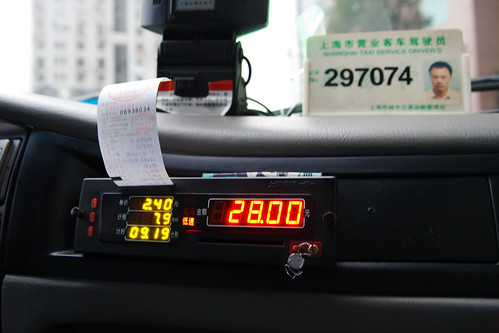
Unfortunately the Maglev doesn't send you right to the doorstep. We needed to catch a cab from the Maglev terminal to the place we were staying in. Contrary to all the evil story you might have heard about China and its cunning people, the taxi drivers in Shanghai are surprisingly honest and professional. For this we must thank the very strict regulation by the government. As you can see in the picture above, the driver's number is displayed clearly (in fact more clearly than Melbourne's counterpart) and you can lodge a complaint about the driver by calling a number right next to it (not in this picture). Every passenger also has the right to request a receipt which contains the number and the detail of the journey.
The unique thing about taxis in China is that they all have what they call an "anti-violence screen" that separates the driver completely from the passengers. The transparent material is also supposedly bullet proof. I came across this shield device in all the cities I have been in China, so I suspect it's a norm all over the country.
The taxi price is very affordable, the starting price is 12 yuan for 3km, and each subsequent km only costs 2.40 yuan. It's also rather comfortable; but fresh foreigners in the country would be shocked by just how reckless the drivers can be. Red lights often mean nothing to the driver who's taking a right turn, and sudden sharp manoeuvres are preferred over rule-abiding driving. In Shanghai, a pedestrian who's crossing an intersection showing green light would be mercilessly honked by a taxi who's taking a turn when it's red light for him. Taxi drivers are in turn honked by truck drivers, who are in turn honked by bus drivers. This is the traffic rule of Shanghai.
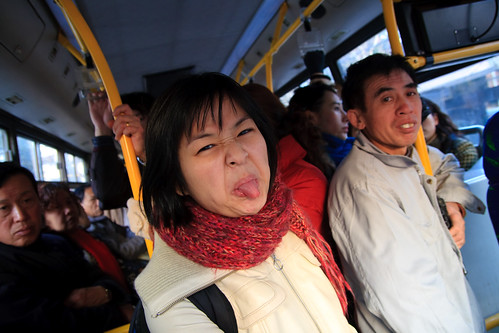
Speaking of bus, we have had our good share of experience about it in Shanghai. As we live a fair distance from the hospital, every morning we have to catch a bus to work. The journey takes about 30 minutes on normal days, but it can take even longer on a busy day.
You would have thought that buses were heavy and there were more inertia to it and it is therefore harder to manoeuvre and therefore the drivers need to be more careful and courteous. Wrong. None of the above (except the heavy part). In Shanghai you don't get to sit on the bus most of the time. You stand from the beginning to the end. When you are standing, not holding onto the rail with BOTH hands is fatal. As you might have guessed from my previous ranting about the "road ranking", the buses are the king of Shanghai's bitumen road because there are simply so many of them. So they do all sorts of dangerous thing with impunity because people have to respect them. In fact, I am surprised that with all the speed and tricky manoevres I witness, I have yet to witness a single accident involving buses. It's not that I want one to happen, but it's just surprising.
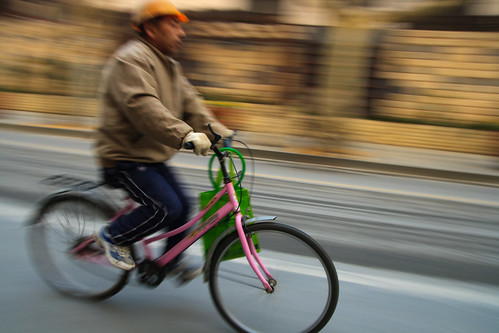
When it comes to danger, nothing beats the danger faced by cyclists in China. Numbered in the millions in each city, cyclists are the second lowest in the road ranking, just slightly higher than the pedestrians and the tourists. In their daily commutation, they have to weave in and out of cars and buses on the road. Most of these bikes are not your developed country road racing bikes; many of them are worn-out olden-day bikes which have probably been passed on for decades. There are so many cyclists that there's an industry in China where technicians basically just sit at every road intersection waiting to repair a passerby's bike.
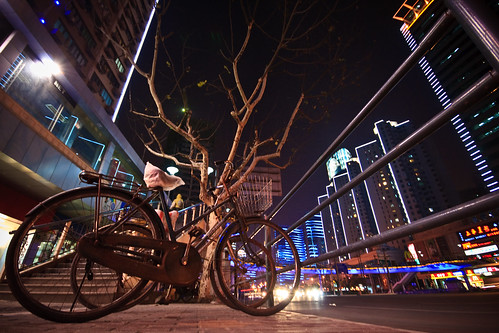
There you have it, the multiple modes of transportation in Shanghai. I have not covered a few things like the ferry service which connects the two sides of the Huangpu River. There are also the long-distance train service which deserves another discussion altogether. So in short Shanghai has a transportation system that works, as long as you can live with its eternal congestion and the lack of courtesy on the road. Perhaps it's the lack of courtesy that makes it work, if people are all as polite as Melburnians we would probably have dead gridlocks throughout Shanghai.







1 comments:
just want to let u know that i still read your blog larr. hahaha. are you coming back for CNY? the first and last shots are awesome.
Post a Comment